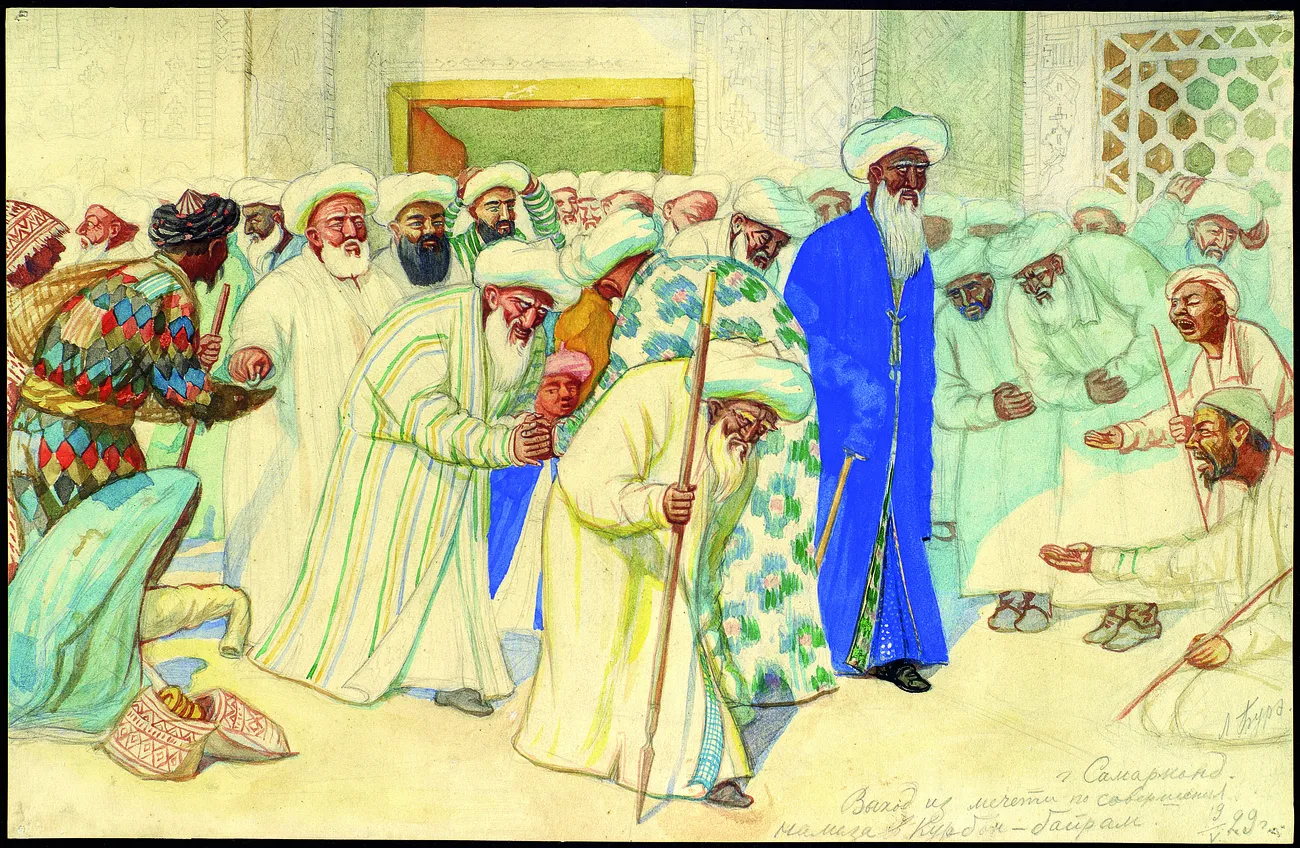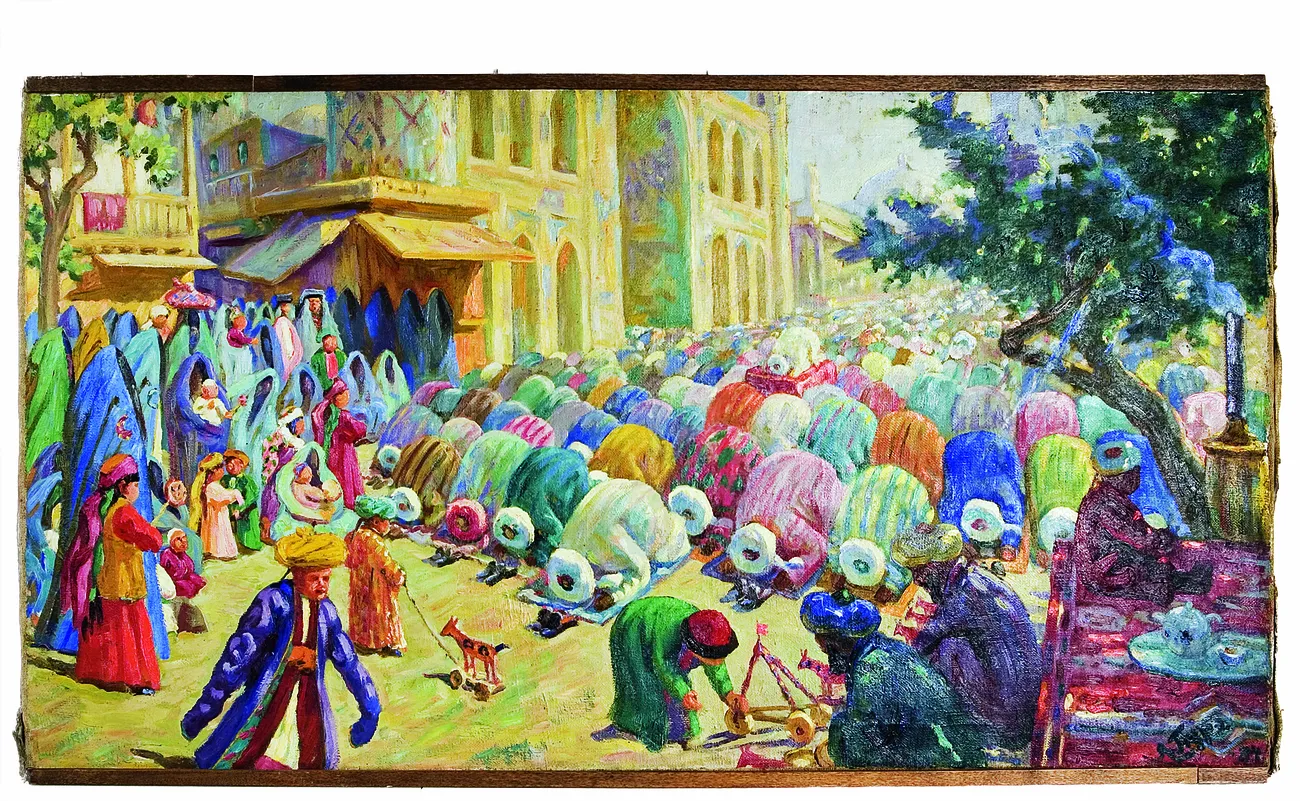The master of landscapes Vyacheslav Leonidovich Sidorenko (1901 – 1944) was born in the city of Kamyshin, Saratov province. He studied painting in Saratov guided by the architect A. Z. Greenberg. In 1921, he entered the Saratov Institute of Art and Industry (the former Bogolyubov Drawing School) in the workshops of A. I. Savinov and P. S. Utkin. In 1928, he took part in an exhibition of the Moscow art society “Four Arts” in the United States. In 1933, he was sent to Central Asia by the Museum of the Peoples of the USSR. He worked some time in Tajikistan.
The buildings in V. Sidorenko’s paintings are very realistic (Miri-Arab Madrasah, 1935, Kalyan minaret and mosque in Bukhara, which enhances the historical value to the works.
Particularly remarkable in this respect are those depicting architectural monuments that haven’t survived to the present day (a mosque and roadside inn or caravanserai near Registan, 1935).
You can learn more about this topic in the book-album “The Collection of the State Museum of the History of Religion” (Volume XII) from the series “Cultural legacy of Uzbekistan in the world collections”.
The general sponsor of the project is the oilfield services company Eriell-Group.


